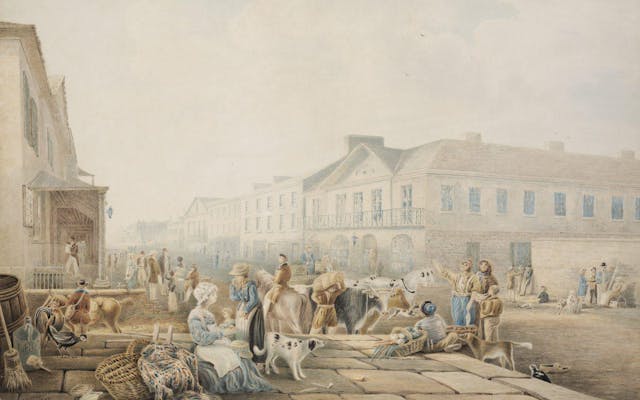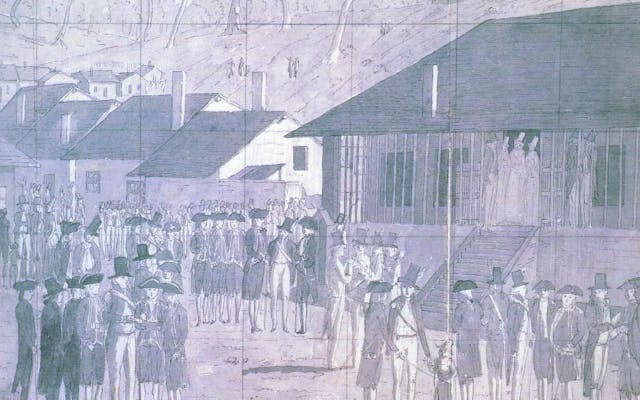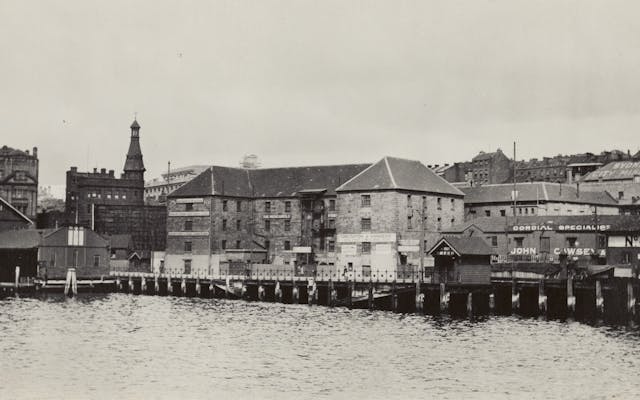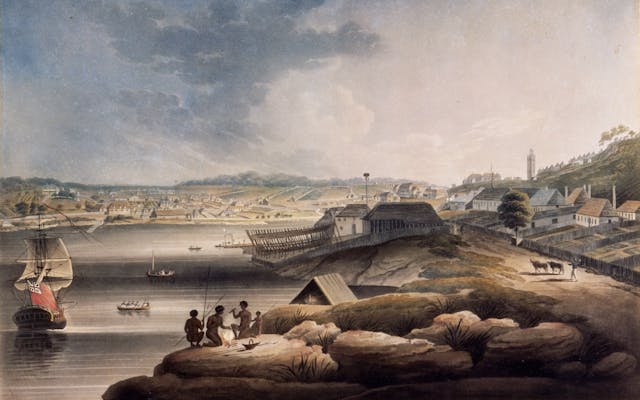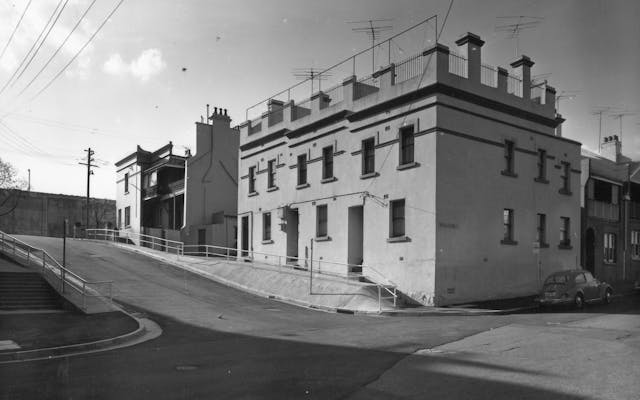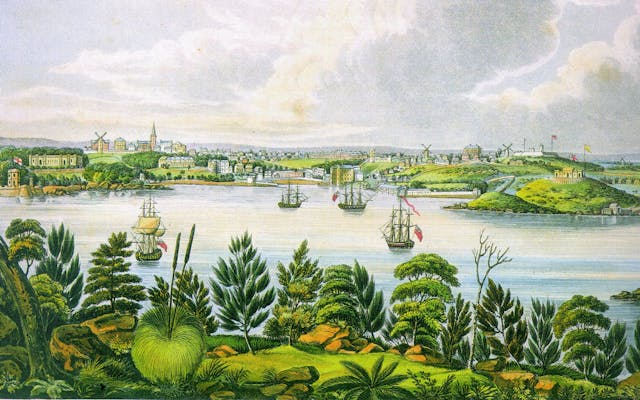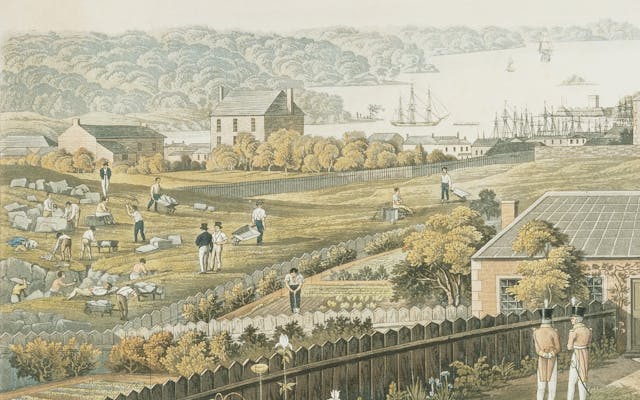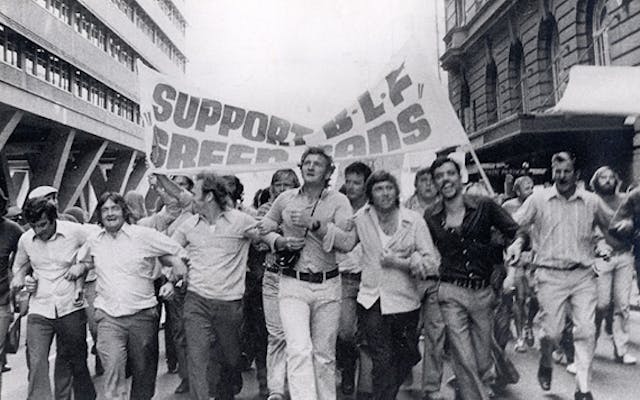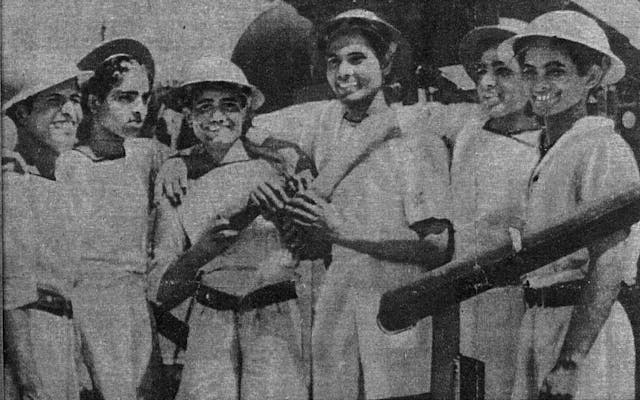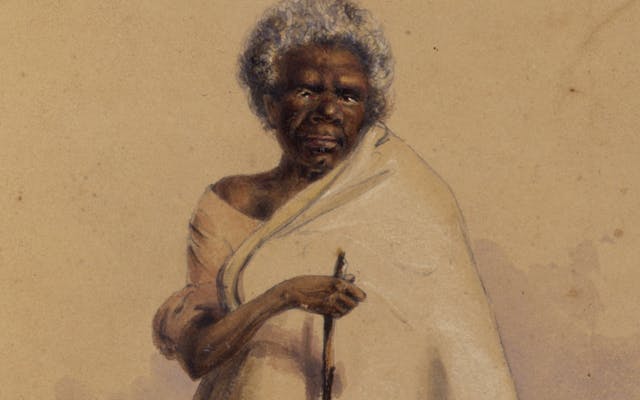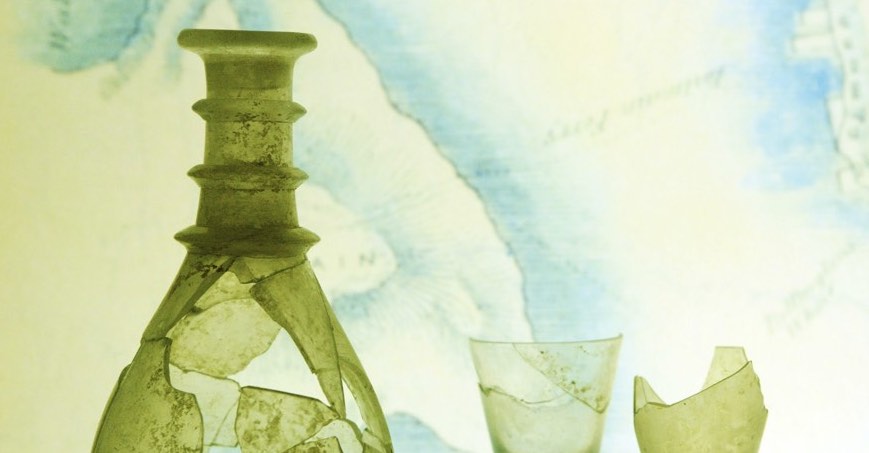Sydney’s Original Town Centre:
Public Wharf, Market Place and Parade Ground.
The construction in 1790 of the Public Wharf, also known as the Hospital Wharf, then as the King’s or Queen’s Wharf – depending on the monarch of the time – marked the beginnings of The Rocks as the commercial centre of Sydney, as it was the landing place for any local produce brought to Sydney for sale down the Parramatta River from Kissing Point (now Ryde) or from the new town of Parramatta.
A formal marketplace soon grew at the junction of the Wharf with the High Street; the area known now as First Fleet Park:
Yesterday morning the wharf was crowded with bidders for the weekly market fare at an early hour; and before eight o'clock several boats arrived mostly burthened with potatoes and maize. A small sample of tolerable wheat was offered at forty shillings a bushel; and potatoes 26 shillings per bag of 100 lbs. (Sydney Gazette 10 Aug 1806, p2)
Not all vendors were honest:
The maize brought to market found rapid sale at 25 to 28 shillings per bushel. A purchaser of a single bushel at the latter price, entertaining some doubt of the measure, after paying for it found the bag, which was warranted to him as a bushel, to contain barely three pecks. Indignant at the imposition, he determined to prefer a complaint to the Bench of Magistrates; in which determination persisting, the vender forcibly returned him his money, and fearful of the consequences of an investigation suffered him to carry off his purchase likewise without a wish to accompany him. (Sydney Gazette 10 Aug 1806, p2)
The former convicts William Miller (b1770, arrived 1791) and his wife Mary Palmer Miller (b1773, arrived 1796) set up a shop close to the marketplace by 1798. William, also known as John Williams, was originally a baker, and had acquired a license to sell alcohol at The Barley Mow, his pub near the wharf. A formidable business pair, the Millers purchased a twelve-ton sloop for William and Mary to bring their own produce from Kissing Point and sold throughout the week when the market wasn’t operating:
SYDNEY WHARF. –– Yesterday morning three boats came in from Kissing Point, with Maize, several sacks of new potatoes, some vegetables and pumpkins, and a slender supply of poultry. Maize continues dull of sale, potatoes in the morning went so high as 15s but afterwards fell to 12.6d per 100lbs. Vegetables, pumpkins, and poultry as last week. The above articles supplied throughout the week by Mary Miller at the Hospital Wharf, at reasonable prices. (Sydney Gazette 28 Oct 1803, p4)
Adjoining the market was the military Parade Ground, fronting what was then the Lieutenant Governor’s house on the south corner of what is now Grosvenor and George Street. It was here in 1793 that the colony turned out to welcome the Spanish scientific expedition headed by Alessandro Malaspina.
As in medieval Europe, the market could also serve as a place of punishment and was the location of the pillory, or whipping post, where criminals would be tied for public ridicule or other punishment. Such was the case with Henry Sayers in 1809:
Henry Sayers was then indicted for a violent attempt upon a girl between 13 and 14 years of age; whose testimony was supported by that of other persons; from all which no doubt remained of the prisoner's guilt. He was found guilty accordingly; and received the following sentence; ― that upon Saturday the 10th instant he should stand one hour on the pillory in the market place at Sydney, between the hours of 10 and 11; and on Saturday the 17th instant at Parramatta in like manner; and at each place receive 100 lashes. (Sydney Gazette 11 Jun 1809, p2)
Punishment at the pillory could be severe. A few hundred years earlier the criminal could be “cropped”; having their ears cut off. By the time the punishment was being meted out in Sydney, the victim’s ears were simply nailed to the post to prevent movement. In April 1807, Thomas Jones was sentenced to stand at the pillory for an hour before being sent to Norfolk Island for seven years. In that case, a benevolent Governor Bligh was pleased to adjust the punishment and delete the requirement of the court, that Jones’ ears be nailed to the post. (SG 5 Apr 1807, pp1–2).
In 1810, the newly arrived Governor Macquarie laid out a new market that included stalls for animals. It was to be a significant event for Sydney, as the new site was to be located some two kilometres south of The Rocks. Rebuilt in the 1840s and again in the 1890s it became known as the Queen Victoria Building, in which form it still survives. A new wharf was built at Cockle Bay (Darling Harbour) and a new road, Market Street, connected the two. In effect, the centre of Sydney was shifting away from The Rocks, though the marketplace in The Rocks did survive in some form for many more decades.
Macquarie was also responsible for the construction of a new parade ground, enclosed by a stone wall and barracks buildings. It covered the area from George Street to York Street, and Jamieson Street to Barrack Street, and was known as Wynyard Barracks. Wynyard Square, much modified, is all that remains of the former parade ground.

